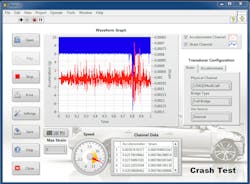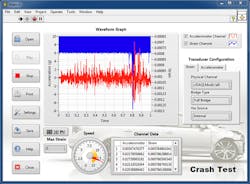Recruiting the Computer for Measurement Assistance
Computer programs for automatic-test-equipment (ATE) applications are well established and available from numerous top suppliers. Many engineers may keep one or more of the leading commercial ATE software programs handy on a laptop computer or integrated computer near their test equipment. Test software can offer many advantages over manual test setups and operation, including consistency, accuracy, and enhanced measurement speed, especially for repetitive measurements. Especially as more and more test hardware setups are moving to readily programmable modular instruments, including PXI and AXIe instrument modules, these high-speed instruments can be optimized in performance when controlled with the right test software package.
For someone who is fairly new to finding the right ATE software package, sorting through the test software products on the market may seem like a daunting task. What are some of the things to look for when comparing different ATE software packages? Sorting through different test software programs can take time, but it can also lead to finding a package that can significantly save time during testing, especially for repetitive measurements such as swept-frequency testing over broad bandwidths, where measurements of an amplifier’s gain, noise figure, and output power at 1-dB compression might be made every 10 MHz across an 18-GHz total bandwidth. For such applications, test software and computer control of a rack of test gear is more than welcome.
Three years ago we ran an article that detailed available test software and how it could be used to enhance and improve different types of high-frequency measurements, including spectrum and vector network analysis. In just a few short years, the software reported in that article has greatly improved, and more test software options have become available from other suppliers.
A name that might be considered synonymous with test software is LabVIEW from National Instruments. LabVIEW has become so well established over the years for many reasons. It is compatible with literally thousands of different test instruments, not just from National Instruments but from all leading test instrument makers, such as Anritsu, Keithley Instruments, Keysight Instruments, Rohde & Schwarz, and Tektronix. It also contains a large number of instrument templates, which are predefined instrument setups for making measurements on different components, such as characterizing attenuators, filters, amplifiers, etc., as well as systems, such as cable television systems, commercial wireless systems, even military radar systems. Different types of measurements are contained within menus, available when a user decides to set up a particular measurement sequence.
A test software program such as LabVIEW adds tremendous speed to a measurement setup, with well-written drivers for the thousands of instruments that it supports, but it doesn’t sacrifice accuracy for speed. It also achieves great precision in its high-speed measurements. LabVIEW provides many useful features to help speed and simplify testing, one which is known as the Application Builder. It allows LabVIEW users to develop measurement programs and essentially share royalty-free copies of their application programs for other users with similar test hardware setups to make the same types of measurements.
To be fair, many leading instrument suppliers also offer powerful test software packages. Keysight Technologies, for example, has developed many application-based software solutions in addition to its popular Signal Studio test software, and these software packages are geared for use with a wide array of instruments, including signal generators, oscilloscopes, spectrum analyzers, and vector network analyzers (VNAs), from Keysight as well as from other instrument companies. Many of these software application packages are available on a free-of-charge, no-risk trial basis, as is the case with many other test software packages from other test equipment manufacturers.
Of course, for someone who is trying to measure one unknown frequency from a crystal oscillator or even a subvert source, ATE software is overkill and will not make the task any easier. But for production testing, and cases where multiple measurements will be needed, measurement software can provide a tremendous edge even compared to the automated measurement routines built into some test equipment, such as vector network analyzers (VNAs). The software serves as an invaluable ally that can not only capture large amounts of data, but help to organize and decipher all those test results.
About the Author
Jack Browne Blog
Jack Browne, Technical Contributor, has worked in technical publishing for over 30 years. He managed the content and production of three technical journals while at the American Institute of Physics, including Medical Physics and the Journal of Vacuum Science & Technology. He has been a Publisher and Editor for Penton Media, started the firm’s Wireless Symposium & Exhibition trade show in 1993, and currently serves as Technical Contributor for that company's Microwaves & RF magazine. Browne, who holds a BS in Mathematics from City College of New York and BA degrees in English and Philosophy from Fordham University, is a member of the IEEE.

